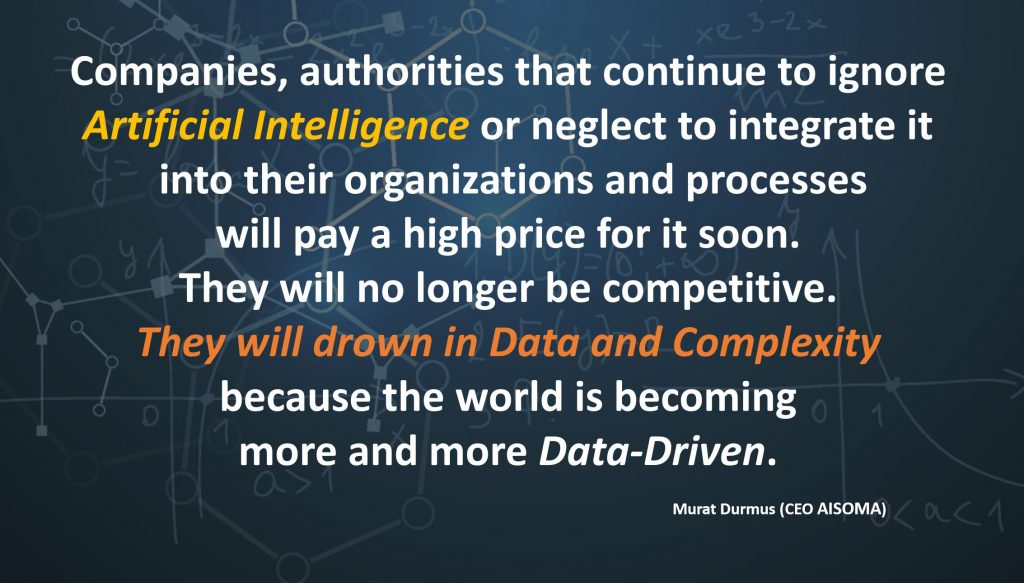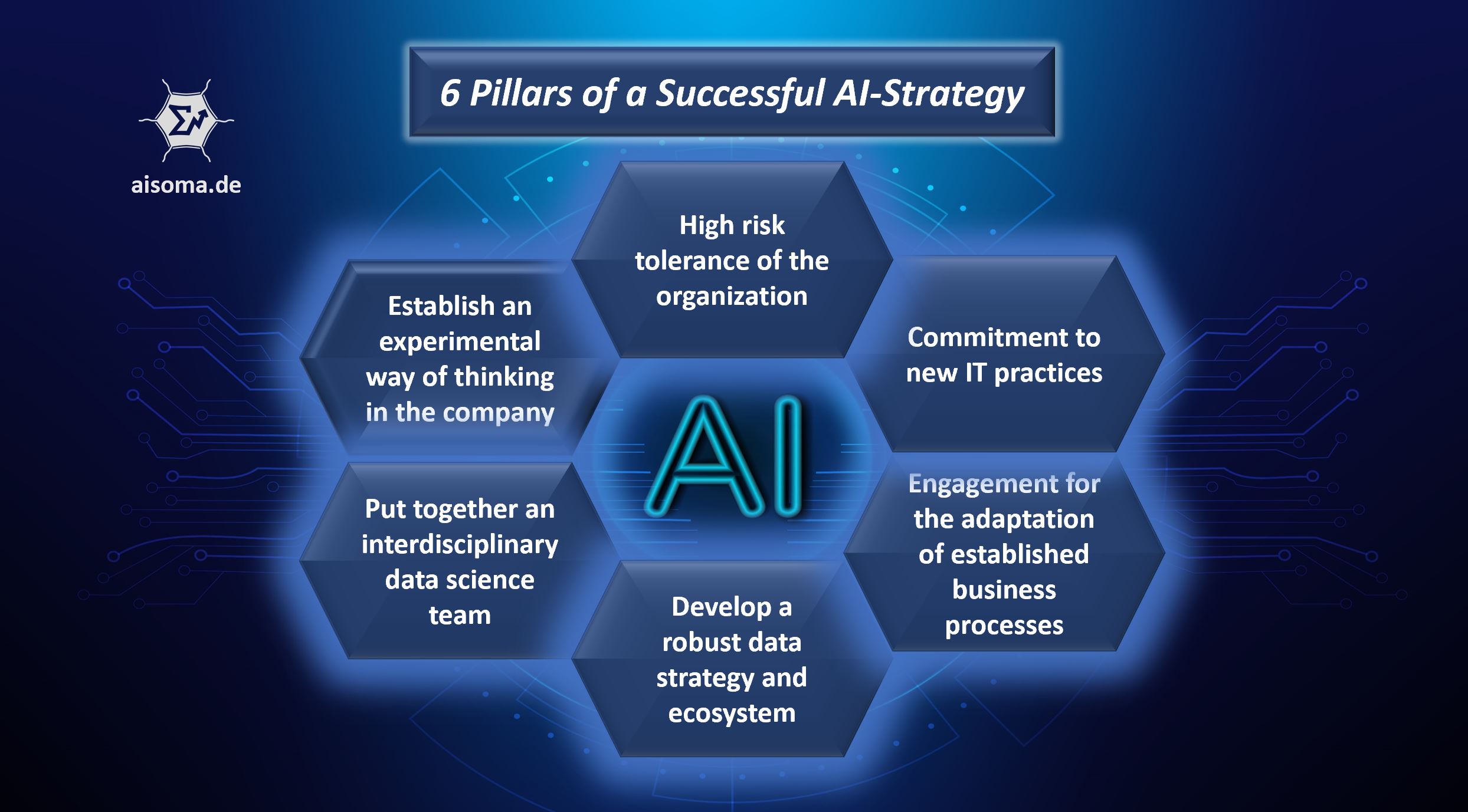Inhalt
Introduction to “6 Pillars of a Successful AI-Strategy”
In this blog article, we want to describe the pillars of a successful AI-Strategy.
Machine learning and artificial intelligence, in general, have been on everyone’s lips for some time now. While the topic of AI is in the foreground in the media, most people (especially the management) still don’t know how machine learning is best applied.
Ultimately, machine learning can be described as a synergetic relationship between man and machine. Machine learning in practice requires the application of the scientific method and human communication skills. Successful companies have the analytical infrastructure, know-how, and close collaboration between analysts and business professionals to translate these synergies into ROI.
Companies must define an AI strategy if they want to remain competitive in the future. But establishing an AI strategy alone is not enough. Of course, it must also be reflected in the organizational structure or it should be able to implement the defined strategy successfully. In the following, some essential cornerstones for a successful AI strategy that your company should fulfill are described.

1. Establish an experimental way of thinking in the company
Machine learning is an iterative and exploratory process. Although core algorithms are increasingly becoming mass-produced, each project must be customized based on the business context and data.
As with any good experiment, some hypotheses will initially turn out to be wrong. New data may need to be procured or generated, or the problem description was rewritten based on what is found. As a result, decision-makers and team members alike need to apply a machine learning test-and-learn mentality to establish successful data analysis.
An iterative process that provides maximum flexibility and agility allows for faster evaluation of progress and to determine whether an alternative approach is needed.
2. Put together an interdisciplinary data science team
Investing in machine learning and seeing results, you can not just invest in technology. You also need to make sure you have the right people or specialists to manage the systems and give them the maximum impact.
Equally important is a dynamic team model that involves various experts with business, data, and technical expertise. This includes data experts who can assess the required data and bring it on board. Last but not least, it also requires IT staff capable of deploying and maintaining the technical ecosystems.
Not to be neglected is the employment of co-workers, who can translate between the quants, the mathematicians/statisticians, and the managers. If there is no link, then misunderstandings and misinterpretations are inevitable, and the danger of failure is great.
3. Develop a robust data strategy and ecosystem
Machine learning needs data – usually vast amounts of data. Setting up a process for sufficient identification, procurement and delivery, and access to quality data and information resources is therefore crucial.
To do this, governance guidelines and the data ecosystem must support exploratory environments (often referred to as sandboxing) and production environments. This requires a multi-level approach to align access and flexibility without sacrificing security, privacy, or quality.
The introduction of non-traditional (abundant) data sources, including unstructured text, speech, images, etc., may also require new data management capabilities.
4. High-risk tolerance of the organization
From agreeing to criteria for what is “good enough” to understanding how models must be validated and developed, machine learning often challenges traditional approaches to quality assurance and risk management. Why? At some point, the training or test data must be replaced by productive data. A true validation only results against new data.
5. Engagement for the adaptation of established business processes
Whether it’s automating an existing decision-making point or providing a new product or service offering, machine learning is disruptive. Assessing the potential impact on existing business processes, roles, and functions is the key. This does not mean that you have to design the possible effects before starting. But a quick check can reduce the potential for costly restructurings afterward. Start with the question:
If we answer this question or present this hypothesis, what can we do with the information?
How can this influence existing processes?
Are we ready and able to make the necessary changes?
6. Commitment to new IT practices
After deployment, the iterative modeling and tuning of the machine learning model must continue steadily. The intervals at which updates are required are unpredictable and do not conform to traditional planned deployment patterns. Consequently, the use of machine learning requires fundamentally different QA and delivery models. Maintaining the model is a critical, ongoing process that must be carried out in the same way as the initial model development.
[bctt tweet=”6 Pillars of a Successful AI-Strategy #AI #AIStrategy #Strategy #CXO” username=”AISOMA_AG”]

by Murat Durmus
Further reading:
